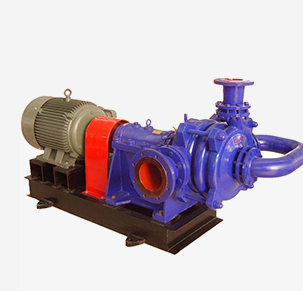Telephone: +86 13120555503
Email: frank@cypump.com
Oct . 06, 2025 00:35 Back to list
ZJW Abrasion Resistant Feed Slurry Pump: Durable, Efficient?
ZJW Abrasion Resistant Feed Slurry Pump
Built in Shifo Town, Anguo City, Hebei Province, this feed pump line comes from a team with decades in slurry handling. Honestly, that shows: the engineering choices are practical, the service notes are realistic, and the support crew speaks “plant language,” not brochure-ese. Many customers say the start-up feels uneventful… which is exactly what you want.

Why this pump matters now
Three trends keep pushing specifiers toward ZJW Abrasion Resistant Feed Slurry Pump units: higher solids content in tailings reprocessing, ESG pressure for energy efficiency, and digital reliability programs. Plants want fewer unplanned stoppages and lower wear rates without babysitting seals every shift. The ZJW package leans into that with high-chrome metallurgy, rubber options, and straightforward monitoring ports for condition-based maintenance.

Applications we see most
- Mineral processing: cyclone feed, tailings transport, thickener underflow.
- Sand & aggregates: dredge feed, fines recovery.
- Power & FGD: limestone slurry, gypsum discharge.
- Coal prep and chemical slurries (≈ pH 3–12, depending on liner choice).
Key specifications
| Flow range | ≈ 10–800 m³/h (real-world use may vary) |
| Head | ≈ 5–80 m |
| Max solids (wt%) | Up to 65% (pulp SG ≤ 1.7) |
| Max particle size | Up to 45 mm (by model) |
| Wet-end materials | High-chrome iron (ASTM A532 Class III Type A, ≈Cr27, HRC 62±3); R55 natural rubber; optional ceramic-coated throatbush |
| Seals | Gland with low-flush, expeller, or cartridge mechanical seal |
| Efficiency | Up to ≈ 68% at BEP (ISO 9906 Grade 2B acceptance) |
| Bearings | Heavy-duty, grease-lubricated; L10 up to 25,000 h |
| Testing | Hydraulic test per ISO 9906; hydrostatic at 1.5× design pressure |

Manufacturing and QA (quick tour)
- Materials: A532 high-chrome castings; R55 rubber molded liners; wear-critical parts shot-blasted, hardness checked (HRC mapping).
- Methods: precision casting, CNC machining, dynamic impeller balance (G6.3); seal faces lapped to Ra ≤ 0.02 μm.
- Testing: performance per ISO 9906; dimensional per ISO 5199 envelopes; pressure test 1.5×; vibration ≤ 4.5 mm/s at rated point.
- Service life notes: impeller 6–18 months in typical cyclone feed; sleeves 4–12 months (slurry chemistry drives spread).
- Certifications: ISO 9001:2015 factory QMS; CE on request.
Field data, briefly
In acceptance tests, a 4×3 model moved 120 m³/h at 32 m head with 68% solids (SG 1.5). Vibration averaged 3.1 mm/s; sound level 82 dBA at 1 m. To be honest, slurry variability can swing those numbers, but the stability looked good.
Vendor comparison (edited for fairness)
| Item | ZJW | Vendor X (metal) | Vendor Y (rubber-lined) |
|---|---|---|---|
| Max solids (wt%) | ≈65% | ≈60% | ≈55% |
| Wet-end options | High-chrome / Rubber / Ceramic throat | High-chrome only | Rubber primary |
| Seal choices | Gland / expeller / mechanical | Gland / mechanical | Gland |
| Service interval | Long (around 6–18 mo) | Medium | Medium–short |
| Energy at duty | Lower by ≈3–7% at BEP | Baseline | Slightly higher |

Customization and selection
Choose ZJW Abrasion Resistant Feed Slurry Pump metal for sharp, angular solids; pick rubber for mildly acidic fines; add ceramic for extreme throat wear. Shaft seal choice often decides downtime, so—if water is limited—go expeller or mechanical seal. Our engineers help map your duty point to impeller trim, speed, and liner set.
Quick case notes
- Iron ore, Inner Mongolia: 6×4 ZJW on cyclone feed, SG 1.55. Uptime +7%, wet-end life from 5 to 10 months after switching to Cr27 + ceramic throat.
- Sand plant, SE Asia: 3×2 ZJW rubber-lined, 35% fines. Seal water cut by ≈40% using expeller; operators joked it’s “boringly stable.”
Process flow from order to startup
- Duty data review (flow/head/SG/pH/solids PSD).
- Material set selection (A532 Cr27 or R55; optional ceramic).
- Manufacture and balance; ISO 9906 test report provided.
- Crate with installation checklist, torque specs, and start-up curve.
- Commissioning assist; baseline vibration and amp draw logged.
Description note: our experienced engineers help you select the right equipment, then stand by it—practical advice, no fluff.
Authoritative citations
- ISO 9906: Acceptance tests for rotodynamic pumps – Hydraulic performance, ISO. https://www.iso.org/standard/62572.html
- ISO 5199: Technical requirements for centrifugal pumps, ISO. https://www.iso.org/standard/29075.html
- ASTM A532: Abrasion-Resistant White Iron Castings, ASTM International. https://www.astm.org/a0532_a0532m-10.html
- Hydraulic Institute Standards for Rotodynamic Pumps, HI. https://www.pumps.org
- ISO 9001:2015 Quality Management Systems, ISO. https://www.iso.org/iso-9001-quality-management.html
-
High Pressure Pump for Detergent Slurry Manufacturer – Efficient, Durable Solutions | CYPump
NewsNov.24,2025
-
High Cr Volute Liner of Slurry Pump – Durable, Cost-Efficient Wear Solutions
NewsNov.23,2025
-
Find Reliable High Chrome Slurry Pump Suppliers – Durable Solutions for Abrasive Industries
NewsNov.23,2025
-
High Chrome Slurry Pump Factories | Durable Slurry Pumps for Mining & Industry
NewsNov.22,2025
-
Durable and Efficient High Chrome A05 Slurry Pump Volute Liners for Mining & Industrial Use
NewsNov.21,2025
-
Heavy-Duty Slurry Pump – Durable, Efficient Industrial Solutions
NewsNov.20,2025







